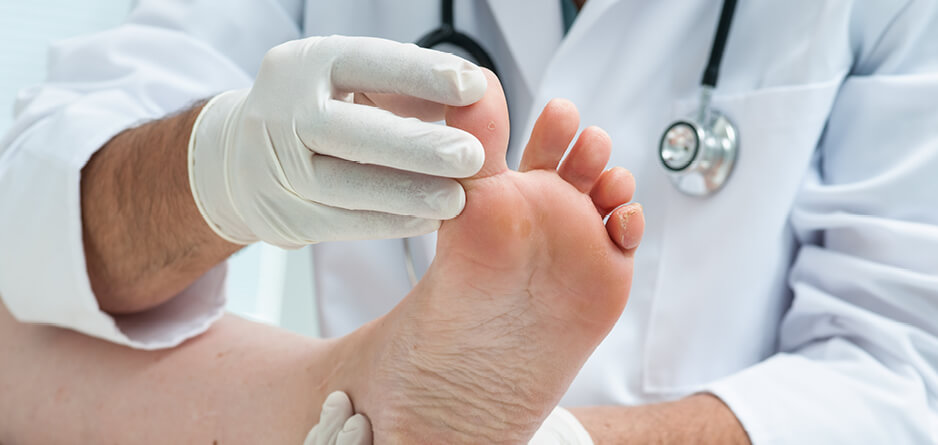
Nail disorders can be more than just a cosmetic concern—they may indicate underlying health issues or infections that require professional attention. Dermatologists specialize in diagnosing and treating various nail conditions, ensuring optimal nail health. If you’re dealing with persistent nail problems, consulting the Best Dermatologist in Dubai can help you receive accurate diagnosis and effective treatment.This blog explores common nail disorders treated by dermatologists, their causes, symptoms, and possible treatments.
Common Nail Disorders Treated by Dermatologists
Nail disorders can arise from fungal infections, trauma, systemic diseases, or genetic factors. Below are some of the most common conditions dermatologists treat.
Fungal Nail Infections (Onychomycosis)
Fungal infections are among the most prevalent nail disorders, causing discoloration, thickening, and brittleness.
-
Causes: Dermatophytes, yeasts, or molds.
-
Symptoms: Yellow/brown nails, crumbling edges, foul odor.
-
Treatment: Antifungal creams, oral medications, or laser therapy.
Ingrown Toenails (Onychocryptosis)
An ingrown toenail occurs when the nail edge grows into the surrounding skin, leading to pain and inflammation.
-
Causes: Improper nail trimming, tight footwear, trauma.
-
Symptoms: Redness, swelling, pus formation.
-
Treatment: Soaking, antibiotics, or minor surgical removal.
Psoriatic Nails (Nail Psoriasis)
Psoriasis can affect nails, causing pitting, ridges, and separation from the nail bed.
-
Causes: Autoimmune disorder.
-
Symptoms: Discoloration, crumbling, oil spots.
-
Treatment: Topical steroids, immunosuppressants, or light therapy.
Bacterial Nail Infections (Paronychia)
Acute or chronic bacterial infections around the nail fold can lead to painful swelling.
-
Causes: Bacteria (Staphylococcus, Streptococcus).
-
Symptoms: Pus, redness, tenderness.
-
Treatment: Antibiotics, drainage, or antiseptic soaks.
Beau’s Lines
These horizontal indentations appear after illness, injury, or severe stress.
-
Causes: Chemotherapy, malnutrition, infections.
-
Symptoms: Grooves across nails.
-
Treatment: Addressing underlying causes.
Yellow Nail Syndrome
A rare condition where nails thicken and turn yellow, often linked to respiratory or lymphatic issues.
-
Causes: Chronic bronchitis, lymphedema.
-
Symptoms: Slow growth, yellow discoloration.
-
Treatment: Vitamin E supplements, treating underlying conditions.
Nail Clubbing
Nails curve downward, often indicating lung or heart disease.
-
Causes: Low oxygen levels, cardiovascular issues.
-
Symptoms: Bulbous fingertips, enlarged nails.
-
Treatment: Managing the primary health condition.
Brittle Nails (Onychoschizia)
Nails that split or peel easily may result from excessive dryness or nutrient deficiencies.
-
Causes: Aging, frequent hand washing, iron deficiency.
-
Symptoms: Cracking, peeling layers.
-
Treatment: Moisturizers, biotin supplements.
White Spots (Leukonychia)
Small white spots or streaks on nails, often due to minor trauma.
-
Causes: Injury, zinc deficiency.
-
Symptoms: White patches or lines.
-
Treatment: Usually resolves on its own.
Melanoma of the Nail (Subungual Melanoma)
A rare but serious form of skin cancer appearing as a dark streak under the nail.
-
Causes: Genetic factors, UV exposure.
-
Symptoms: Dark band, nail splitting.
-
Treatment: Surgical excision, biopsy.
Diagnosis and Treatment Approaches
Dermatologists use various methods to diagnose nail disorders:
| Diagnostic Method | Description |
|---|---|
| Physical Examination | Visual inspection of nail color, shape, and texture. |
| KOH Test | Microscopic examination for fungal infections. |
| Nail Biopsy | Removing a small nail sample for lab analysis. |
| Blood Tests | Checking for systemic conditions like anemia or diabetes. |
FAQ’s:
Can nail disorders indicate serious health problems?
Yes, conditions like clubbing or yellow nail syndrome may signal lung, heart, or lymphatic issues.
How long does it take to treat a fungal nail infection?
Treatment may take several months since nails grow slowly.
Are home remedies effective for nail fungus?
Mild cases may improve with tea tree oil or vinegar soaks, but severe infections need medical treatment.
Why do my nails have ridges?
Vertical ridges are usually harmless, while horizontal ridges (Beau’s lines) may indicate illness.
When should I see a dermatologist for nail problems?
Consult a dermatologist if you notice persistent discoloration, pain, swelling, or changes in nail shape.
Conclusion
Nail disorders can range from minor cosmetic concerns to signs of systemic diseases. Early diagnosis and treatment by a qualified dermatologist can prevent complications and restore nail health. If you’re experiencing persistent nail issues, seeking advice from the best dermatologist ensures expert care tailored to your condition.By understanding common nail problems and their treatments, you can take proactive steps to maintain healthy, strong nails. Always prioritize professional medical advice for accurate diagnosis and effective solutions.


